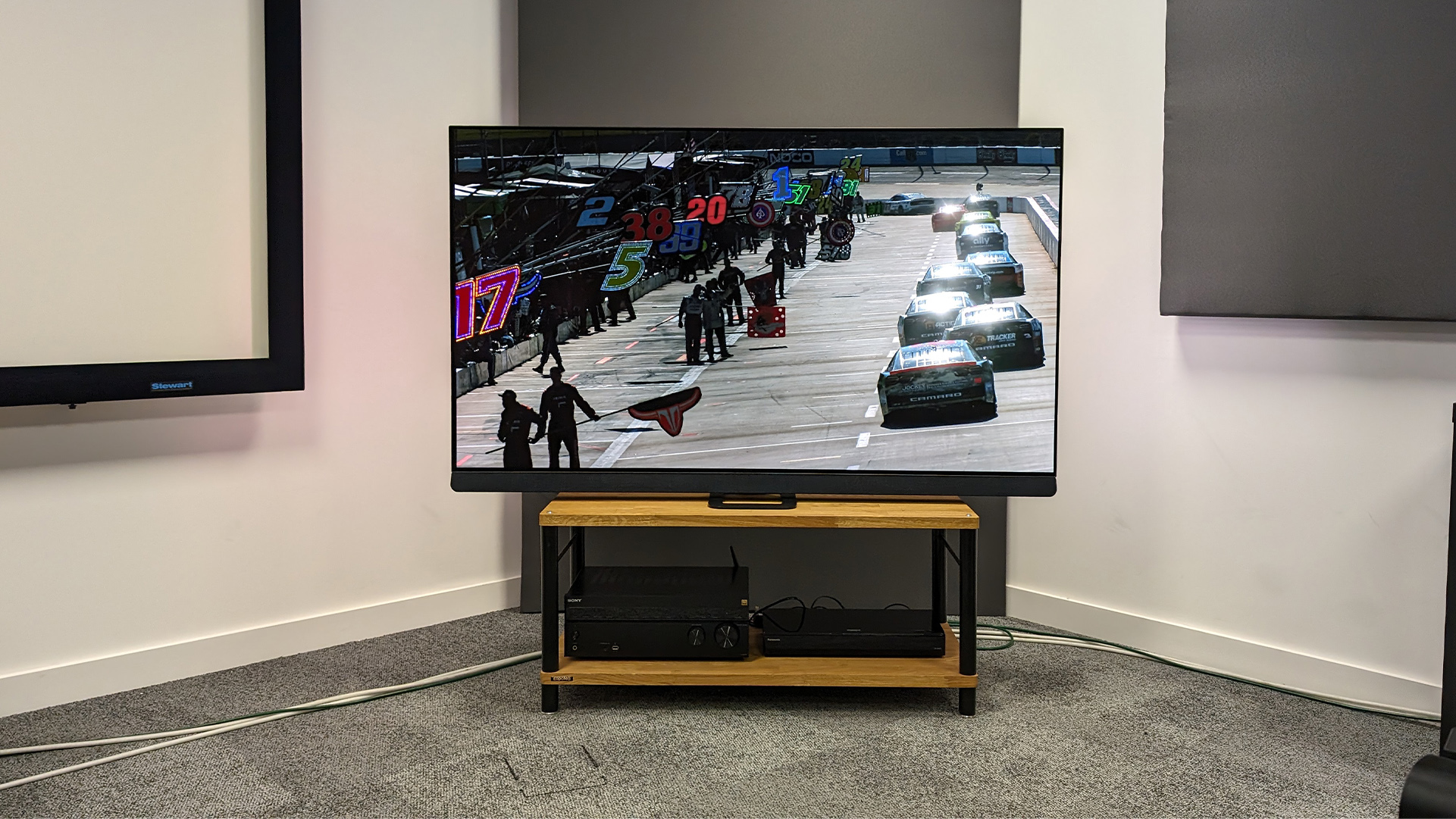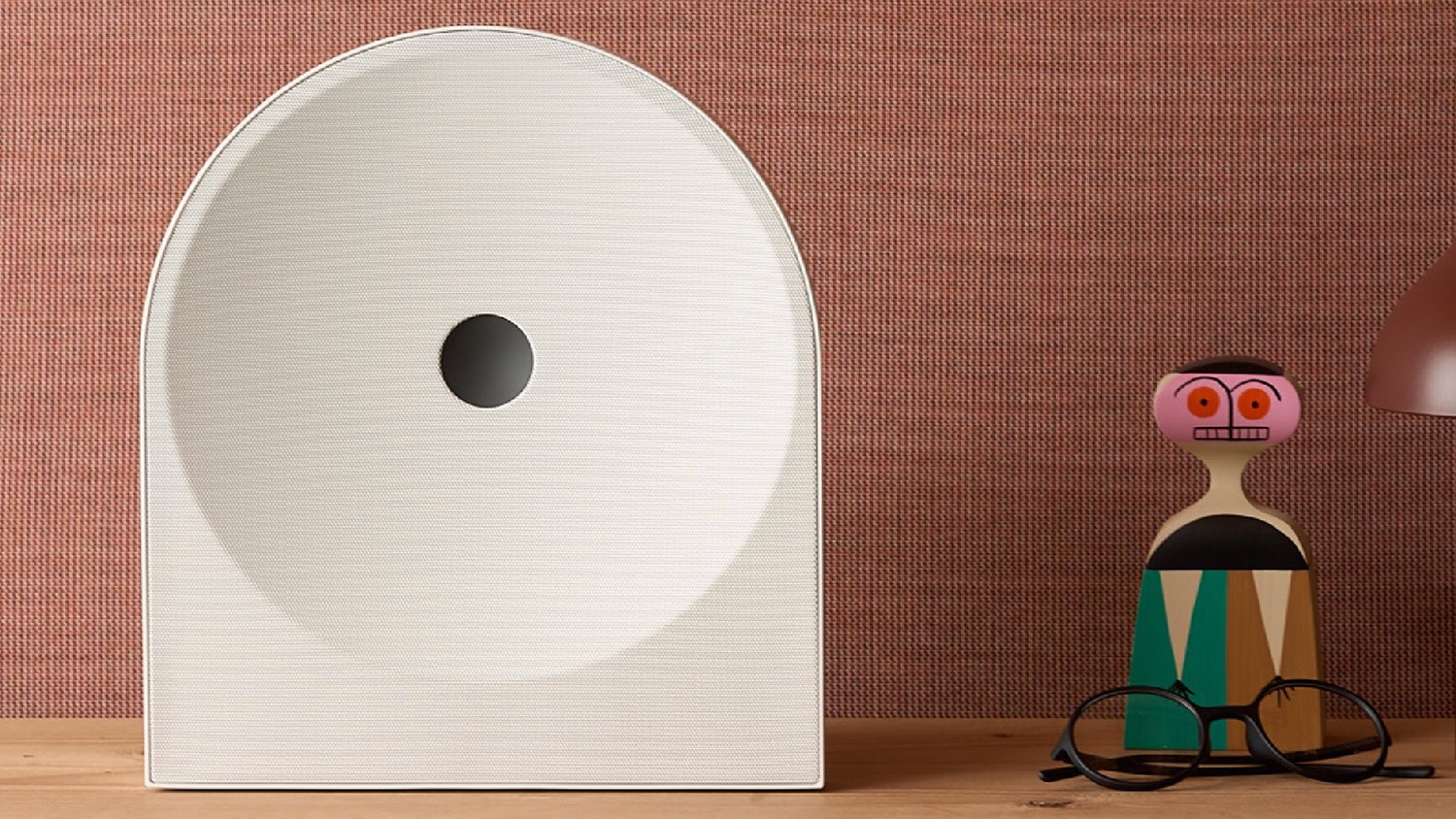What Hi-Fi? Verdict
Aggressive pricing, brilliant picture quality and solid audio make the Philips OLED908 an easy recommendation
Pros
- +
Brilliantly bright and dynamic picture
- +
Good audio by TV standards
- +
Ambilight support will delight fans of the tech
Cons
- -
Limited to two HDMI 2.1 inputs
- -
Doesn’t support some UK catch-up apps
- -
Slightly pale colours in low-light scenes
Why you can trust What Hi-Fi?
The Philips OLED908 is the final flagship TV from last year to pass through our labs. Why is it so late, you ask? Because, despite Philips unveiling the TV in January last year, the 908 only actually made it into shops at the end of 2023. In fact, the 908 is so late it managed to go on sale only a little before its successor, the new Philips OLED909 was announced.
That might make you wonder why you should care about this model. Thankfully, having put the set through its paces in our dedicated test room, we can confirm there is plenty to get excited about here, especially given a recent price cut that makes it one of the best-value TVs to feature the What Hi-Fi? Award-winning Micro Lens Array (MLA) tech.
Price

The Philips OLED908 is available in 55-, 65- and 77-inch sizes. And despite only arriving in UK stores a few months ago, its price has already radically dropped.
You can currently grab the 55-inch Philips OLED908 for £1999 (£1699 for VIP Members), the 65-inch model for £2499 (£2199 for VIP Members) and the largest 77-inch option for £4299 (£3599 for VIP members). While you will need to sign up for Richer Sounds’ VIP Club to get those lower prices, doing so is quick and free.
The only other MLA OLED TVs currently available are the LG G3, which is priced similarly to the Philips, and the Panasonic MZ2000 ,which costs significantly more. The OLED908 is also radically cheaper than the Sony A95L QD-OLED, the base 55-inch model of which starts at a hefty £2499.
Design
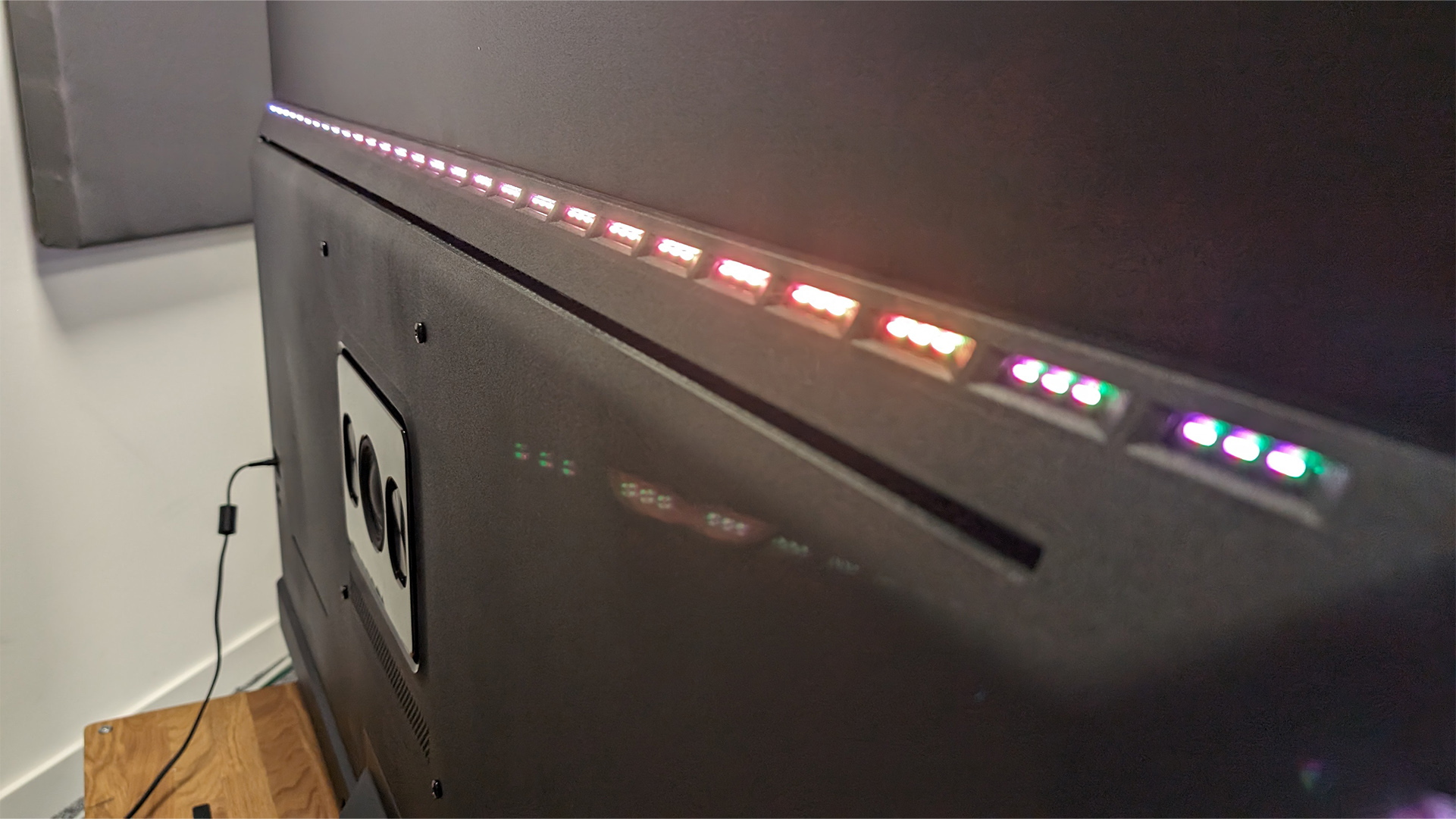
The Philips OLED908 is one of the more ostentatious-looking TVs to pass through our test rooms. This is at least partly because of the inclusion of Ambilight LED bulbs around its rear. But it is also due to the inclusion of a large speaker bar that's mounted directly under the TV. The bar tilts slightly upward and is wrapped in a premium-looking acoustically transparent Kvadrat fabric.
The only downside to having the speaker bar there is that it makes it all but impossible to sensibly place a soundbar under the TV. Philips would argue the speaker removes the need for this, but for anybody who’s already invested in a separate audio package, it will be an annoyance.
The latest hi-fi, home cinema and tech news, reviews, buying advice and deals, direct to your inbox.
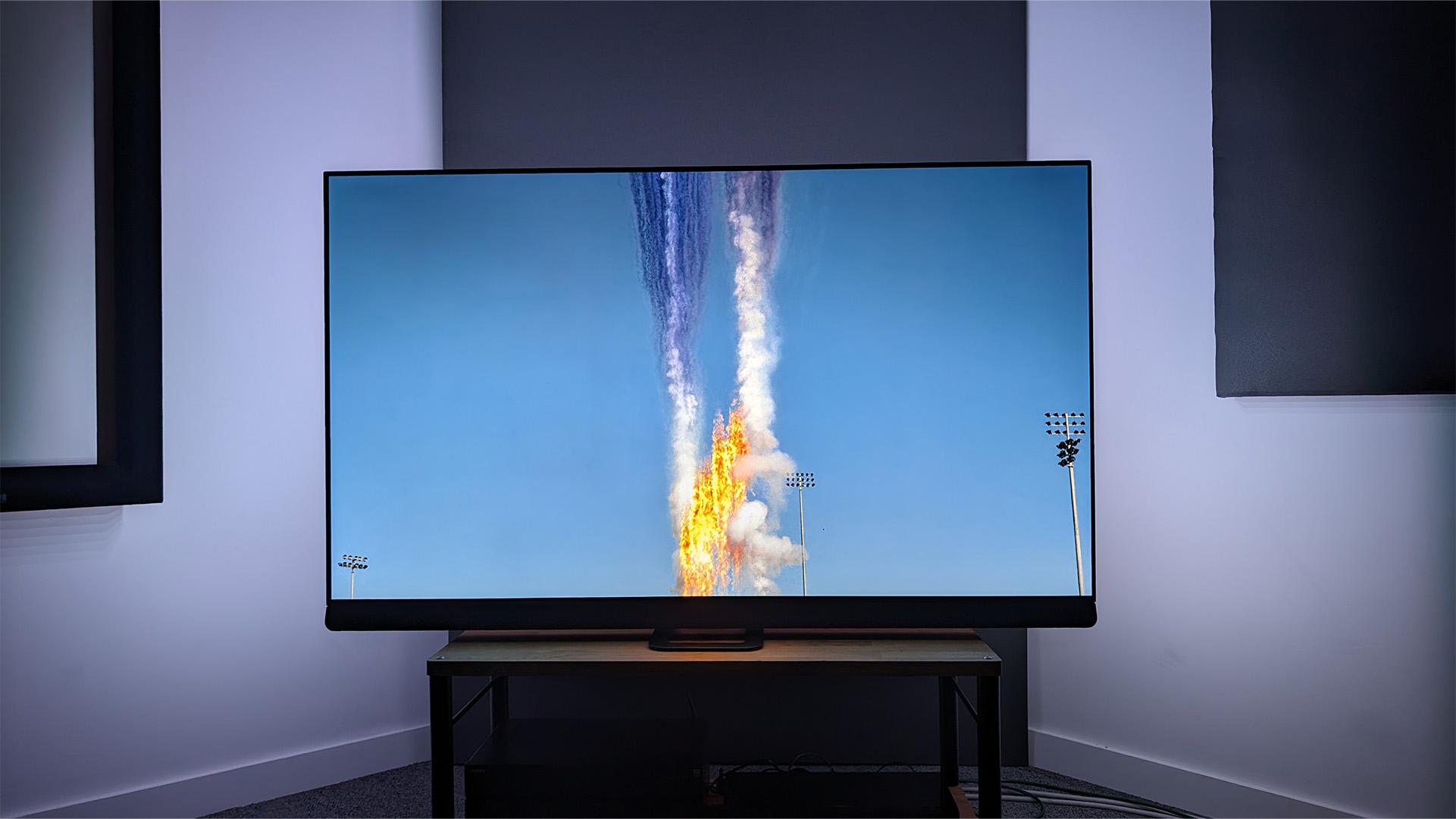
Screen size 65 inches (also available in 55 and 77 inches)
Type OLED
Resolution 4K
HDR formats HLG, HDR10, HDR10+, Dolby Vision
Operating system Google TV
HDMI inputs x 4 (2 x 48Gbps HDMI 2.1)
Gaming features 4K/120Hz, VRR, ALLM, Dolby Vision gaming
ARC/eARC eARC
Optical output? Yes
Dimensions (hwd, without stand) 87 x 144 x 7.1cm
The large speaker bar gives it a slightly similar look to the Panasonic MZ2000 that passed through our test rooms late last year. Outside of this, it has an atypical stand compared to other Philips sets such as the step-down Philips OLED808 we tested last month. Specifically, the stand is smaller and doesn’t have the T shape of older Philips models. This gives it a much smaller footprint and makes it easier to place on most stands. As an added perk the stand has a swivel element that makes it quick and easy to adjust its angle and access its rear-facing ports on the fly.
We’re also very big fans of the OLED908’s remote. As well as being nicely compact, with clear controls and a solid metal build that’ll survive even the most ardent toddler or angry dog’s punishment, the remote is fully backlit. This sounds like a minor detail, but you’d be surprised how many top-end OLEDs, which are designed for serious movie watchers who will generally use them in the dark, don’t have backlit remotes.
Features

Ambilight is a unique selling point for Philips TVs, including the OLED908. This is a technology Philips has pushed for quite some time. It uses LED lights dotted around the TV’s rear to create bias lighting – which aims to reduce eye strain, improve immersion levels and enhance contrast. It does this by doing things such as projecting a gentle green hue around the TV when watching football, to create the illusion the pitch is extending.
The OLED908 sports the version Philips debuted in 2022, which is one generation behind the latest ‘Ambilight Plus’ version that's set to appear on the 909 when it arrives later this year. We haven’t tested the new Plus version in our labs yet, but based on the brief time we had with it at a Philips press event it does have a few notable upgrades. Chief of these is the ability to show a wider range of light effects, the ability to project four different colours in steps, as well as generally improved responsiveness.
It's also worth noting that the OLED908 features three-sided Ambilight, so doesn't shine light from its bottom edge. That will be a bit of a shame for Ambilight fans who are planning to wall-mount the TV, especially as four-sided Ambilight was a feature of some 2022 models and is making a comeback on Philips' 2024 sets.
How much of an annoyance the lack of Plus is will be determined by how big a fan you are of Ambilight in general. The technology is a Marmite feature, even within the What Hi-Fi? team, with some feeling the functionality is a welcome bonus, especially when gaming or watching children's content. Others view it as light pollution, pure and simple.
Philips has also added a heat sink to the TV’s design in a bid to let it make the absolute most of its first generation MLA panel – which also uses LG Display’s META algorithm alongside Philips custom picture processing to let the TV hit a quoted 2100 nits max brightness. The max brightness puts it behind 2024’s incoming second-generation MLA and new QD-OLED sets, some of which are being touted as being able to hit 3000 nits. We’re less concerned about this for now as, based on our experience, there’s still very little source material that’ll go that high, to begin with, and considering the fact older OLEDs used to struggle to go beyond 700 nits, the figure is still impressive.
Under the hood, the OLED908 runs using a 7th Gen P5 AI processor, which powers the TV’s picture processing and Google TV OS. The OS is great if you’re used to using a current generation Chromecast with Google TV, offering an intuitive single-pane-of-glass view of all your content and a reasonably intuitive UI. App support for most common streaming and gaming services is also included. Netflix, Amazon Prime Video, Apple TV and Disney+, are all present with support for Dolby Vision, HDR10+ and/or Dolby Atmos. The only gripe we have here is that, like the OLED808, local app support is a little hit-and-miss. For example, in the UK you won’t find any apps related to Freeview Play. That includes big-name services such as BBC iPlayer, ITV X, Channel 4 and My5.
Another minor, but common, annoyance is that the 908’s use of the MediaTek Pentonic 1000 means the set only has two full-fat HDMI 2.1 sockets, one of which doubles as its eARC port. The inputs support Dolby Vision Gaming and 4K/120Hz but the limited inclusion of just two HDMI 2.1s is an annoyance nonetheless. As we’ve said many times before, if you’re a gamer with a separate Dolby Atmos sound system, PS5 and Xbox Series X/S console you will find yourself regularly swapping cables with this arrangement.
It’s also why, if you fall into the latter camp, you’d likely be better off looking at an LG G3, which features four full-fat HDMI 2.1 inputs.
Picture
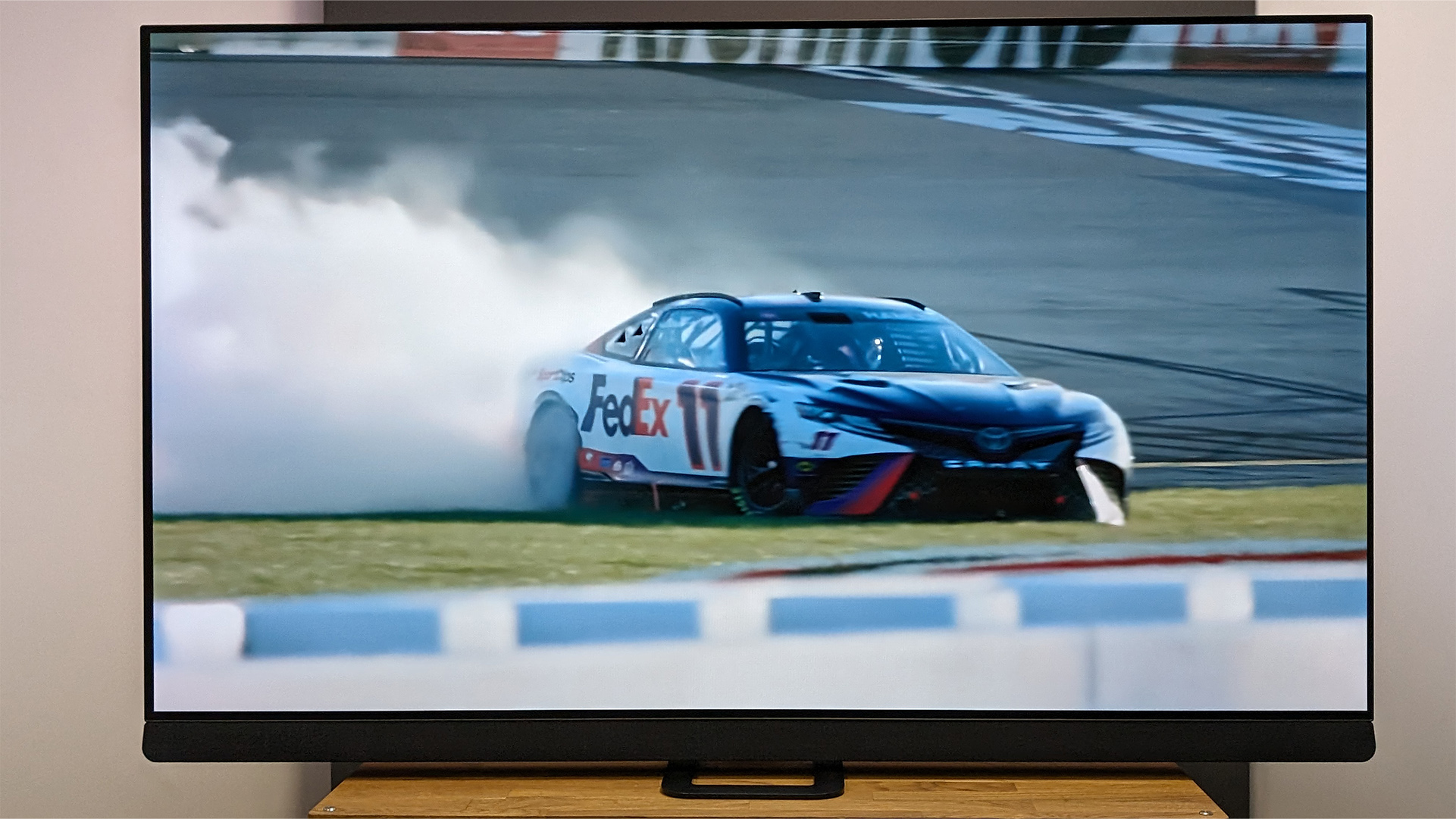
Testing the 908 in our dedicated test rooms our reviewers were pleased to see Philips has taken the same toned-down approach it did with the OLED808, which sees it focus more on control and precision than many of the older sets did. To catch readers up, Philips is famous for pushing panels to their absolute limit, squeezing every possible drop of max brightness and punch out of them.
Philips' TV big wig, also known as its senior director of product strategy and planning, Danny Tack, said as much in an interview we did with him last year. In it, he clearly said the reason Philips chose to use MLA over QD-OLED in the OLED908 was its higher maximum brightness.
This quest for the spectacular has resulted in some instances of overly saturated colours in the past, but the OLED908 is a pleasant change, with its Filmmaker mode delivering an immersive, but more controlled performance in most of our checks.
During the opening scene of Blade Runner 2049, the OLED908 delivers excellent shadow detail, wonderfully bright whites and suitably realistic colours. Comparing it to the OLED808, the presence of MLA tech also makes its presence immediately noticeable, with the higher max brightness driving better contrast, particularly in bright scenes. This is particularly noticeable during the panning shot over the futuristic cityscape, where the added contrast gives the buildings more clarity and a better sense of three-dimensionality.
That said, we also spot that, while shadow detail is marginally better, there is a slight issue with colours in dark scenes. Watching the opening scene, Dave Bautista's skin looks noticeably paler on the OLED908 than the non-MLA OLED808. We experienced a similar issue when we reviewed the LG G3, whereas the Sony A95L and Samsung S95C QD-OLED models have better colour saturation in these dark scenes.
Moving on to Pan, the test disc we often use to gauge maximum brightness levels due to the fact it’s been mastered to a massive 4000 nits, the results are night and day. Watching a particularly bright scene where the pirate’s ship flies through the sky, the stars have noticeably more pop. Going into daytime there is a wider hue of colours and extra detail in the setting sun on the OLED908 compared with its OLED808 sibling.
It is a similar story when we check Dolby Vision's performance during Top Gun: Maverick. During the opening scene, the sun reflecting off the ocean is full of detail and holds a wonderful sparkle that makes for a truly immersive viewing experience. Skin tones also remain surprisingly accurate, with the sun-kissed actors' faces looking suitably realistic and free of the overcooked “oompa loompa” look we get on some competing TVs.
Things get a little more muddied when with darker material, however. This is immediately noticeable on The Batman, which is one of the darkest test discs we use, being mastered to 400 nits max brightness. Here the difference MLA makes is much more subtle. There is more shadow detail and slightly more contrast, but it’s not as noticeable outside of very intense scenes, like the car chase scene where Batman marches through open flames to interrogate The Penguin. That isn't to say that the OLED908 doesn't look great with material such as this, because it does. It's just that the benefits of its MLA tech are less pronounced.
SD upscaling is broadly good, too. Using True Grit, a famously difficult 1080p test that’s intentionally grainy and full of dark scenes, the image looks authentic, but there is a bit of black crush, where detail is lost through the TV’s upscaling.
Sound
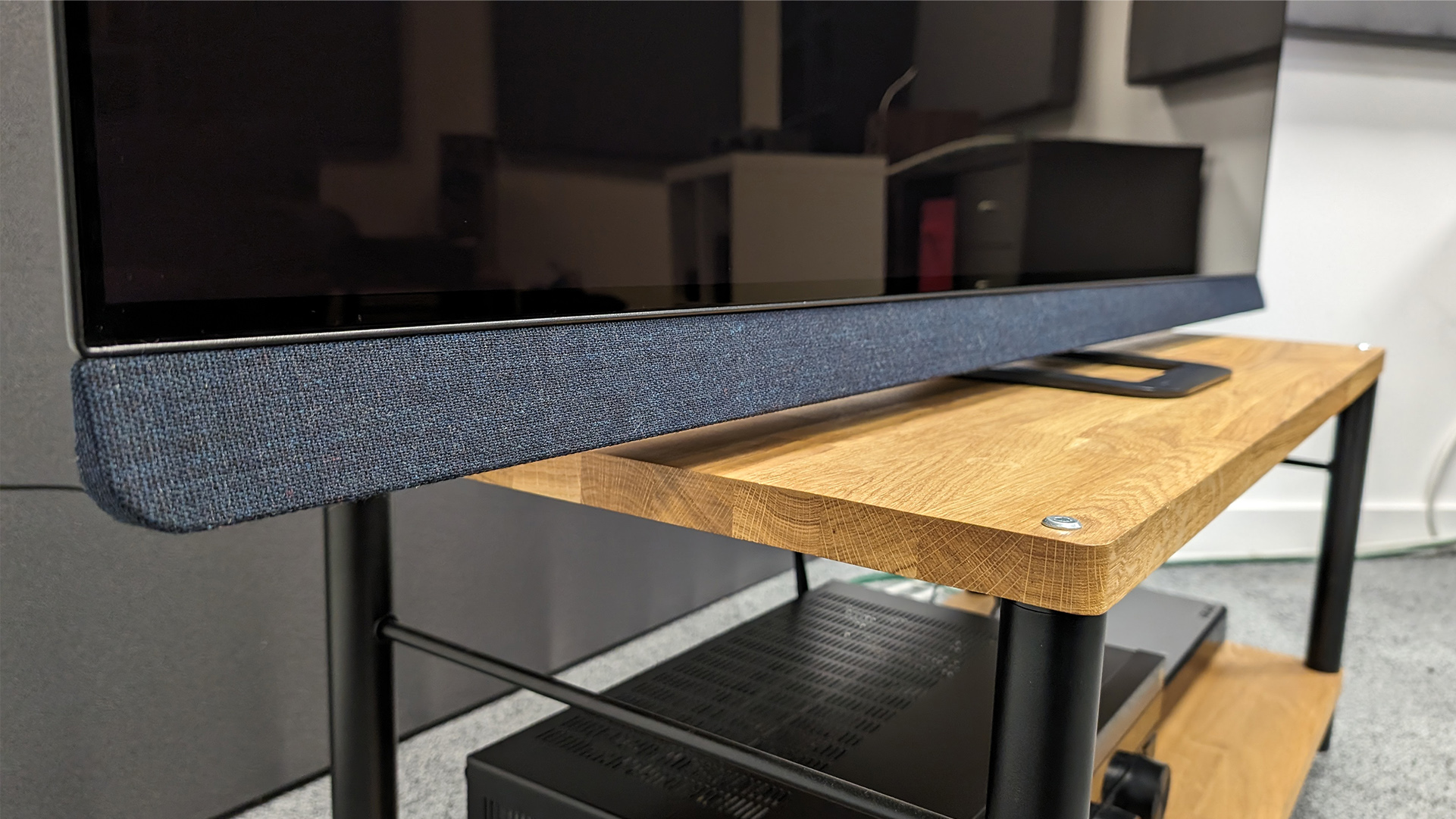
The OLED908 comes with a Bowers & Wilkins-designed sound system, the drivers of which are housed in a thin, Kvadrat-covered bar that’s mounted to the TV’s bottom edge. These drivers are arranged in a purely front-firing 3.1 configuration, and the whole system is rated to 80W.
This is a clear technical step up on its direct rival, the LG G3, which has a hidden, 60W, 2.1 system. Putting the Philips through its paces, we can confirm it is one of the best-inbuilt sound packages on an OLED TV at the moment. Running our standard Blade Runner 2049 chapter two stress test, the package performs well.
This is a particularly difficult bass-heavy scene that most speakers struggle with, but the OLED908’s speakers offer a surprising amount of low-end heft during the tests. This heft also has considerably more control behind it than the Panasonic MZ2000, whose speaker system offers decent weight but is less clear and dynamic during our checks. The OLED908 is also less prone to distortion even at high volumes.
The same is true during the heated Batmobile car chase in The Batman. Here the low end has noticeably more grumble and is significantly more powerful than any competing set we tested last year, especially the LG G3 – which is the weakest audio performer in the premium category. The audio also does a particularly good job projecting itself forward thanks to the speakers' front placement.
It doesn’t dethrone the Sony A95L as the best-sounding TV, though. While the Philips has more low-end heft, the Sony A95L’s bass is more controlled and clean.
Outside of the low end, the audio does still come with some key compromises, which is why we wouldn’t wholeheartedly agree with Philips’ assertion you don’t need a separate soundbar or speaker package.
While the low end works well enough, the OLED908 is less assured with higher frequencies. The background noise during K’s ‘baseline’ interview scene veers just a little across the line from sparkling to bright, and there is a smidge of sibilance from time to time.
On top of that, while the audio is nicely projected forward, the Sony A95L offers a noticeably wider soundstage and much more directionality. This is another key reason why we still view the A95L as the best-performing TV for audio at the moment.
Verdict
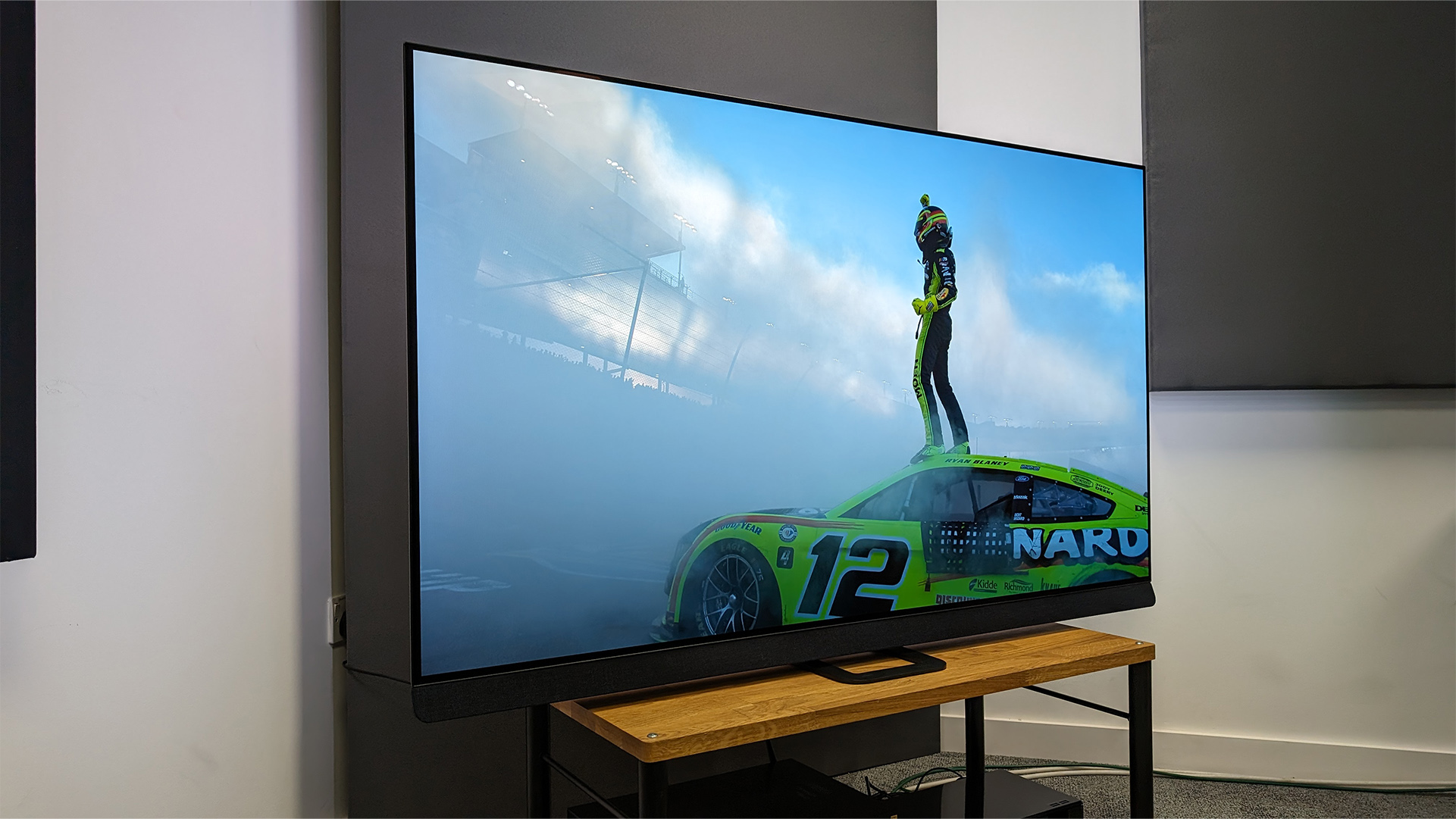
The Philips OLED908 is going to be replaced by the newer Philips OLED909 in a few short months, but at its current price, it’s one of the best-value next-gen OLED TVs around. As an added perk, it’s also the second-best-sounding TV we’ve tested, only being beaten by the more expensive Sony A95L.
SCORES
- Picture 5
- Sound 4
- Features 4
MORE:
Read our review of the LG G3 (OLED65G3)
Also consider the Philips OLED808 (65OLED808)
Read our Sony A95L (XR-65A95L) review
Best 65-inch TVs: the top models we've tested

Alastair is What Hi-Fi?’s editor in chief. He has well over a decade’s experience as a journalist working in both B2C and B2B press. During this time he’s covered everything from the launch of the first Amazon Echo to government cyber security policy. Prior to joining What Hi-Fi? he served as Trusted Reviews’ editor-in-chief. Outside of tech, he has a Masters from King’s College London in Ethics and the Philosophy of Religion, is an enthusiastic, but untalented, guitar player and runs a webcomic in his spare time.
